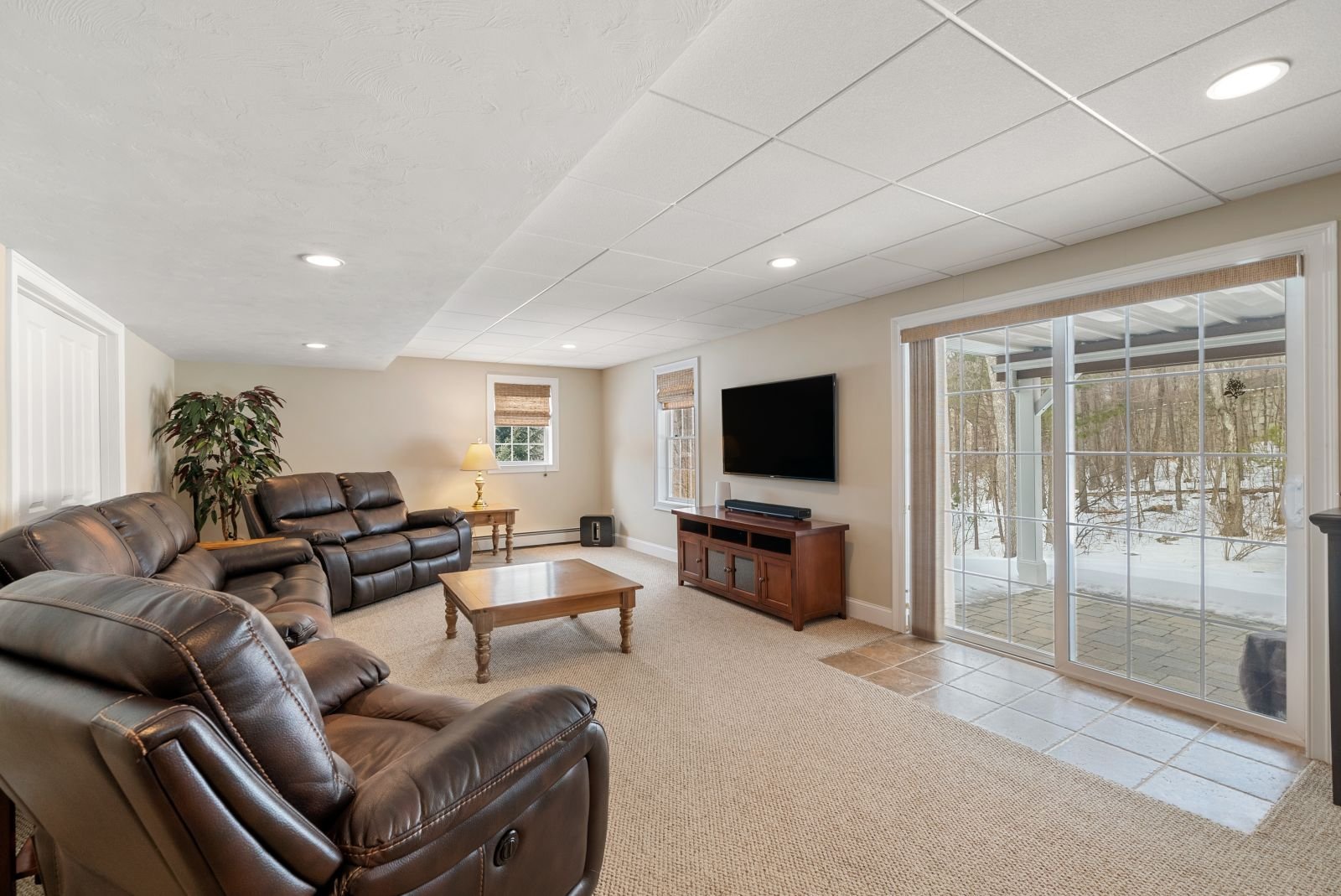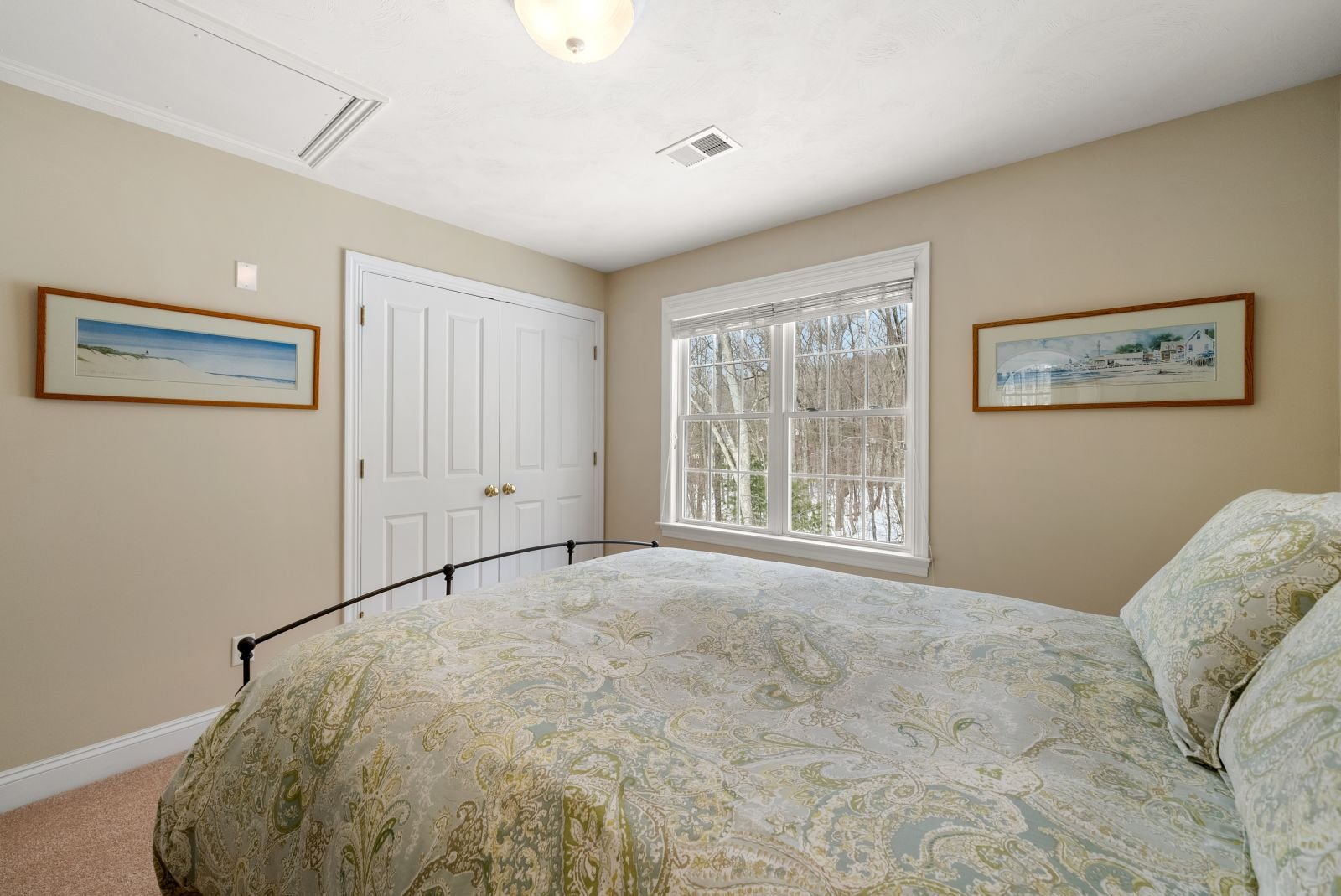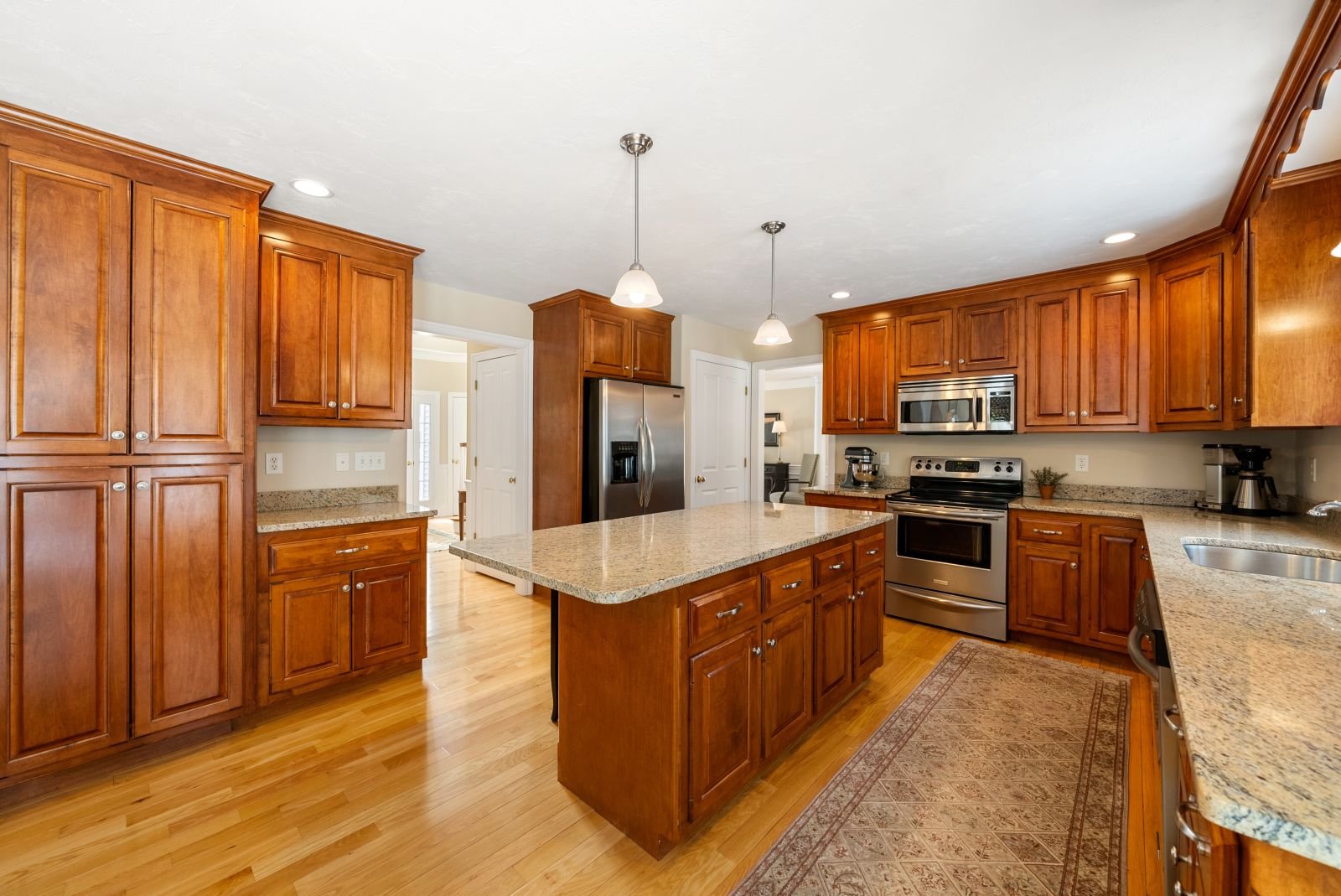Seasonal Photography Tips For New England Real Estate
Mastering real estate photography in New England requires understanding how to capture these seasonal nuances.
New England homes possess a timeless charm that transforms dramatically with each season. From snow-covered Colonial facades to vibrant fall foliage framing Victorian porches, mastering real estate photography in New England requires understanding how to capture these seasonal nuances. Today, we'll explore techniques that help showcase properties at their finest year-round, with special attention to winter photography as demonstrated in our featured property.
The Seasonal Canvas: Why New England Properties Demand Year-Round Photography Expertise
Unlike many regions, New England experiences four distinct seasons, each presenting unique opportunities and challenges for property photography. A home photographed in summer will appear dramatically different from the same property captured in winter. Professional New England real estate photographers understand that seasonal context matters—buyers want to envision how a property will look and feel throughout the year.
The characteristic weather patterns, dramatic shifts in natural light, and seasonal landscaping all contribute to the need for specialized approaches. A photographer who masters these seasonal variations can transform ordinary property listings into compelling visual stories that connect emotionally with potential buyers.
WINTER
Featured home 20 Magnolia Ln, North Grafton, MA 01536, USA
Winter Wonderland: Showcasing Snow-Covered New England Properties
Winter presents some of the most challenging yet rewarding conditions for real estate photography in New England. Our featured property, a classic home in the wonderful North Grafton neighborhood, in Massachusetts. It demonstrates how winter photography can highlight architectural strength and seasonal charm.
Snow-covered landscapes create unique exposure challenges. Professional photographers balance the bright reflective quality of snow against the need to capture architectural details. This often requires bracketing exposures and using HDR techniques to ensure both snowy exteriors and interior spaces are properly exposed.
Winter photography also benefits from careful timing.
The low winter sun creates extended golden hours with softer, more flattering light. For our featured property, we scheduled the shoot for mid-morning when the sun had risen high enough to illuminate the facade but was still casting interesting shadows that highlighted the home's distinctive lush environment.
Interior shots during winter require special attention to creating warmth. Our featured property's photography utilized warm color temperatures and highlighted features like the wood-burning fireplace and south-facing windows that flood the living space with natural light even during winter months.
What to Tell Your Photographer During Winter Shoots
When scheduling a winter property shoot, communication with your photographer ensures optimal results:
Inform them about snow conditions: Fresh snow photographs beautifully, while old, dirty snow detracts from curb appeal. Consider timing around snowfalls.
Highlight winter-specific features: Point out elements like fireplaces, radiant heating, insulated windows, or southern exposures that enhance winter living.
Prepare the property: Ensure walkways are cleared, icicles removed (unless they add charm without suggesting maintenance issues), and winter decorations are tasteful and minimal.
Discuss lighting solutions: Winter days are shorter, so discuss whether supplemental lighting will be needed for twilight or interior shots.
Identify winter challenges: Note any seasonal challenges like ice dams, difficult-to-access angles, or areas where snow might obscure important features.
Featured Property: Winter Photography Case Study
































Our featured property, a 19th-century Colonial with modern updates, presented several challenges typical of winter real estate photography in New England. The white clapboard exterior against snow required careful exposure management to maintain detail and dimension.
We employed several techniques to address these challenges:
Timed the shoot for 10 AM when the low winter sun created subtle shadows that defined architectural details
Used polarizing filters to reduce glare from snow and ice while enhancing the deep blue winter sky
Incorporated drone photography to show the property boundaries clearly despite snow cover
Highlighted winter-friendly features like the heated driveway and sunroom that offers bright space even in winter months
Captured twilight exterior shots with interior lights glowing to convey warmth against the snowy landscape
The client reported that these winter photographs generated significant interest, with buyers appreciating the opportunity to see how the property functions during New England's most challenging season.
SPRING
Spring Renewal: Capturing New England's Awakening Landscapes
Spring offers a rebirth narrative for New England property photography as gardens emerge and trees bud with new life. This season presents opportunities to showcase landscaping potential and transitional indoor-outdoor spaces.
The challenge of spring photography lies in its variability. Early spring in New England can still appear wintery, while late spring bursts with color. Professional photographers track flowering schedules of common landscape plants like dogwoods, azaleas, and cherry trees to capture properties when surrounding vegetation is most appealing.
Spring light brings its own considerations. The increasing daylight hours provide more scheduling flexibility, but spring rain and overcast days require photographers to be adaptable. Many professionals keep flexible scheduling during this season to capitalize on clear days after rainfall when gardens appear lush and the light is crystal clear.
What to Tell Your Photographer During Spring Shoots
When planning spring property photography, consider these communication points:
Share landscaping highlights: Identify early-blooming perennials, flowering trees, or other landscape features that should be captured at peak bloom.
Point out recent improvements: Spring often reveals recent renovations or property updates that should be highlighted.
Discuss weather contingencies: Have a flexible schedule that allows for rescheduling if spring weather turns unpredictable.
Prepare seasonal spaces: Clean and stage patios, decks, and other outdoor living areas that may have been unused during winter.
Highlight water management: If your property has good drainage or water management features, spring is an excellent time to showcase these practical benefits.
SUMMER
Summer represents peak photographic season for real estate photography in New England.
Summer Splendor: Maximizing New England's Peak Season
Lush landscaping, extended daylight hours, and vibrant neighborhood amenities create ideal conditions for showcasing properties.
Professional photographers face the challenge of managing harsh midday sunlight during summer months. Many opt for early morning sessions to capture the soft, golden light before heat haze develops. Alternatively, late afternoon "golden hour" photography can bathe properties in warm, flattering light.
Summer allows photographers to emphasize outdoor living features—patios, pools, gardens, and neighborhood amenities all become key selling points. Wide-angle exterior shots can place properties in the context of beautifully maintained summer landscapes, while drone photography can highlight proximity to water features or recreational areas that may be less apparent in other seasons.
What to Tell Your Photographer During Summer Shoots
For optimal summer property photography:
Identify outdoor living highlights: Point out entertainment spaces, garden features, pools, or unique landscaping elements.
Schedule around peak garden times: If your property has significant landscaping, schedule photography when flowering plants are at their best.
Prepare water features: Ensure pools, fountains, and other water elements are clean and functioning.
Consider twilight shoots: Summer evenings allow for dramatic twilight photography that showcases outdoor lighting and entertainment spaces.
Highlight cooling features: Draw attention to features that improve summer comfort—shade trees, breeze corridors, central air conditioning, or ceiling fans.
FALL
Fall Foliage: New England's Most Photogenic Season
Fall represents New England's signature season, with autumn real estate photography capturing the region's world-famous foliage. This season creates naturally stunning backdrops that can elevate property appeal through association with New England's most iconic imagery.
Professional photographers track foliage progression, understanding that peak color varies by location and elevation. The challenge lies in timing shoots to capture peak color without waiting too long and risking leaf drop or storm damage.
Fall photography benefits from the season's unique quality of light. Lower sun angles create warm golden tones, while clear fall days offer exceptional visibility. Many photographers enhance these qualities by scheduling shoots in late afternoon when the sun illuminates foliage from the side, creating dimension and highlighting color.
What to Tell Your Photographer During Fall Shoots
For effective fall property photography:
Identify best foliage views: Note which property angles benefit most from colorful tree lines or mountain views.
Maintain fall curb appeal: Keep leaf removal ongoing during the photography timeframe without eliminating the attractive leaf accents that create seasonal charm.
Schedule strategically: Discuss timing around peak foliage, which varies by location and elevation across New England.
Highlight season-specific features: Draw attention to wood stoves, energy efficiency, or cozy interior spaces that become more valuable as winter approaches.
Consider neighborhood context: Suggest capturing the property within the context of tree-lined streets or nearby scenic areas at peak color.
Drone Photography Through the Seasons: Capturing New England Properties from Above
Aerial real estate photography adds a powerful dimension to property marketing in New England, with each season offering unique opportunities for compelling drone imagery.
Professional drone operators often use polarizing filters to enhance sky color against white landscapes and schedule flights during the golden hour when shadows add dimension to snowy terrain.
Winter Drone Photography
Winter presents distinct advantages for aerial property photography in New England:
Snow-covered landscapes clearly define property boundaries and features
Bare trees reveal property topography and spatial relationships not visible in leafy seasons
Low sun angles create dramatic shadows that highlight architectural features
Smoke from chimneys adds a charming lived-in quality when captured from above
Winter drone challenges include shorter battery life in cold temperatures, limited flying windows due to weather conditions, and maintaining visual contrast with snow-covered landscapes.
Spring Drone Photography
Spring aerial photography captures:
The emerging landscape as properties transition from winter dormancy
Early blooming trees that create distinctive aerial patterns
Property drainage patterns visible during seasonal thaws
The relationship between the property and surrounding green spaces coming to life
Spring drone operations contend with unpredictable winds and rapidly changing weather conditions. Photographers often schedule multiple potential flight days to ensure optimal conditions, particularly to capture flowering trees at peak bloom or to avoid periods of heavy spring rain.
Summer Drone Photography
Summer offers prime conditions for New England drone photography:
Maximum daylight hours for flexible scheduling
Lush landscaping that frames and defines properties
Opportunity to showcase proximity to summer amenities like beaches, lakes, and parks
Clear visibility that allows for higher altitude contextual shots
Summer challenges include harsh midday sun creating flat lighting and tendency toward haze on hot days. Professional drone photographers often schedule early morning flights when air clarity is highest and shadows add dimension without being overly harsh.
Fall Drone Photography
Fall creates spectacular opportunities for aerial property photography in New England:
Dramatic foliage colors that showcase the regional character
Opportunity to capture properties within iconic New England autumn landscapes
Visibility of landscape design as perennial gardens prepare for dormancy
Clear fall air that allows for exceptional long-distance visibility
Fall drone photography requires careful timing around peak foliage and awareness of rapidly changing daylight hours. Many photographers monitor foliage reports and schedule flexibility to capture properties when surrounding trees reach their colorful peak.
Essential Equipment for Year-Round New England Property Photography
The investment in professional equipment translates directly to image quality that helps properties stand out in competitive regional markets.
Professional real estate photography in New England requires specialized equipment to address seasonal challenges:
Wide-angle lenses (16-35mm) that capture spacious interiors without distortion
Polarizing filters to manage glare from snow, water, and wet surfaces
Graduated neutral density filters to balance bright skies against darker foregrounds
Professional flash systems with remote triggers for interior lighting challenges
Weather-resistant drone equipment with filters and programmable flight paths for consistent aerial perspectives
Weather-resistant camera bodies that perform reliably in New England's variable conditions
Tripods with adjustable legs for uneven winter terrain or sloped landscapes
Post-processing software for season-specific color correction and exposure blending
Conclusion
New England's seasonal transformations present both challenges and opportunities for real estate photography. Properties that might seem ordinary in flat lighting can become extraordinary when photographed with seasonal awareness.
Professional photographers who understand the region's unique lighting, landscapes, and architectural traditions can capture images that not only document properties but tell their seasonal stories.
Our featured winter property demonstrates how even the most challenging season can yield compelling imagery when approached with technical skill and regional understanding. These photographs don't just show a house—they invite potential buyers to imagine themselves experiencing the property through all of New England's distinctive seasons.
Ready to Showcase Your Property?
Ready to showcase your property in its best seasonal light? Schedule a consultation with our team of New England photography specialists today. Our seasonal expertise ensures your property shines regardless of when you choose to list. Find a schedule with us now to discuss your property's unique seasonal features.





